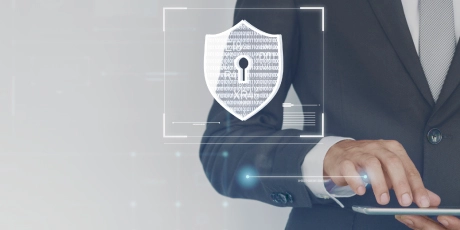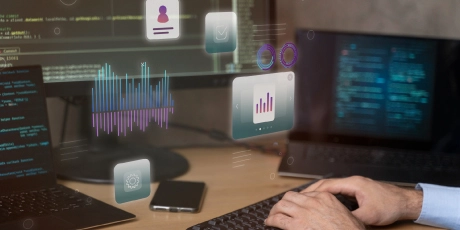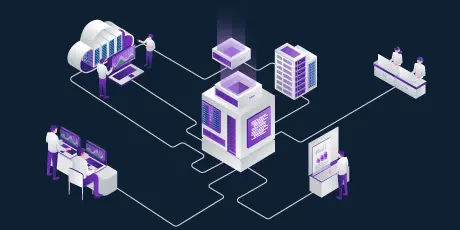
The Pandemic Effect: Best Practices to Tackle Hybrid Model Contact Center Work Culture
Make your hybrid contact center a lot more efficient with the significant advantages it offers.
The advent of the pandemic has forever changed and reshaped the world as we know it. From healthcare to logistics, every industry had to face a set of challenges. Now, almost a year and a half down the lane, most organizations have reinvented themselves to ensure business continuity and sustainability.
As the pandemic peaked, businesses across the world struggled to streamline their tools, resources, and processes. One of the biggest challenges they faced was navigating the workforce through the unchartered territory of remote working.
Before the global shutdown, only the higher echelons of an organization were. could enjoy the flexibility of remote working. But the sudden total lockdowns in 2019 forced entire workforces to switch to remote work. Customer service-oriented enterprises and contact center businesses, in particular, felt the pressure and uncertainty of the pandemic more acutely. Leaders and managers in these organizations had to adopt agile practices that enabled the team to stay on the same track while delivering the usual contact center support.
The saving grace that empowered organizations to quickly adapt was the advanced cloud-based contact center solutions. Such solutions enhanced the dynamics of a cloud-powered enterprise helping stakeholders manage their needs better and ensuring a seamless employee experience (EX).
Today, contact centers are facing a new breed of challenge - the effective management of a hybrid model work culture where part of the workforce works from home and the rest from the office. This model of remote working has its own set of pros and cons. The difficulty lies in tackling hybrid models ergonomically, without losing focus on accountability, performance, and goal achievement.
We have compiled a few industry best practices to help contact centers adapt to hybrid work models.
- Remote Working Roster
Sometimes, figuring out the ideal ratio of employees who can and cannot work remotely can be tiring and often confusing. Several industry giants have adopted a fixed hybrid model, where a predetermined ratio of the workforce works from the office. Others have adopted a slightly more flexible model, which allows the teams to work from home partially. Whatever the case might be, the best practice to ensure that the contact center teams are well-organized is to plan a roster and designate obligations in advance. Doing so will help the managers and the workforce stay in sync while the business remains unaffected. - Organization Flexibility
Revamping business models became the primary strategy of all industries once it became apparent that the pandemic wasn’t seasonal. Customer-centric enterprises overhauled their existing structures, and regulations to allow their workforce a greater level of flexibility. From leveraging employee experience services to embracing robotic process automation solutions, contact center businesses have come a long way in the past year compared to the progress they made in the last decade. - Improving Agent Experience
Organizations often lose focus when it comes to employee experience (EX). The pandemic has proved that the best of technologies can perform without a hitch only when experts are behind them. The COVID situation and its effects on the economy have affected the contact center workforce and their ultimate service delivery. When the employee experience (EX) is exemplary, customer experience (CX) naturally becomes superlative. - Implementing KPIs (Key Performance Indicators)
How to measure the quality of deliverables when the workforce is scattered? The hybrid model work culture created challenges that are best addressed only by leveraging modern contact center solutions. The best practice here is to condense the hierarchy and create KPIs that can be evaluated by the stakeholders immediately and effectively. - Community Building
Build a virtual community surrounding your contact center workforce that allows them to connect and communicate effortlessly. The key for organizations to sustain themselves in these challenging times is to render first-class customer service. That is possible only when your contact center workforce is motivated to give their best. One way for organizations to ensure that is to support them in every way possible, both professionally and personally. Investing time, tools, and resources in your contact center workforce will surely yield positive results.
The hybrid model work culture is as stressful for the workforce as it is for the organization. It is imperative to tap on the existing contact center technological resources to balance the tightrope of employee experience (EX) and customer experience (CX). With over two decades of experience, Sensiple is one of the largest contact center solution providers globally. From custom enterprise solutions to bot development services, Sensiple's wide range of solutions has empowered thousands of businesses by equipping them with modern tools and technologies. Click here to learn more about our Contact Center offerings.


